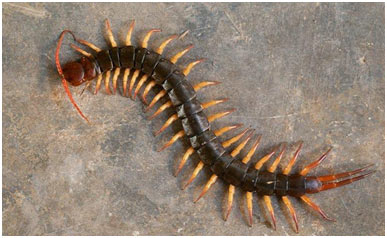Do You Know???
- The word ‘centi’ in Latin means for hundred.
- In actual centipedes do not have 100 legs.
- The longest centipede named Scolopendra gigantea from Venezuela was 10 inches long.
- Centipedes are carnivorous hunters; feed on small insects, Mollusks and invertebrates.
- Centipedes have a bad reputation as poisonous organisms although they have venomous fangs but they are not deadly enough to kill humans.
- Centipedes are active at night time. It is rare for us to spot centipede in the day time.
- The average life span of a centipede is about five to six years.
- There are around 8000 different species of centipedes.
Dangerous Centipedes
Centipedes are mostly carnivorous, and much like insects and spiders, they belong to the arthropod phylum. Regardless of what many individuals assume, centipedes are not insects; rather, they belong to the Chilopoda genus of arthropod.
The centipede has actually been known to trigger deaths; however, these results are rather rare. However, giant centipedes can definitely ruin your day, and the chances of falling ill after being injected with their venom are not unlikely. Here are a few dangerous centipedes to be aware of:
1.Giant Scolopendridae
Looks like a lot of hazardous animals are always from Australia, and this centipede is among them. These big centipedes can grow up to 30 centimeters, and the large size permits them to eat mice and lizards quickly.
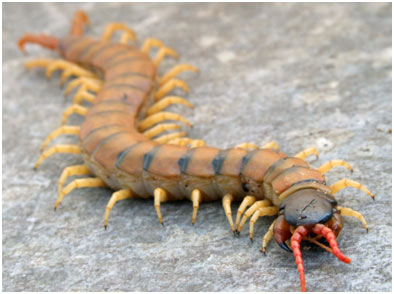
The bites from Giant Scolopendridae can trigger extreme discomfort which lasts for days. You can tell by their big dark flat body along with yellow legs, this one looks really frightening.
2.Scolopendra cingulata
Scolopendra cingulata, also called Megarian banded centipede, and the Mediterranean banded centipede is a species of centipede, and “the most common scolopendromorph species in the Mediterranean area. Scolopendra cingulata is an opportunistic predator.
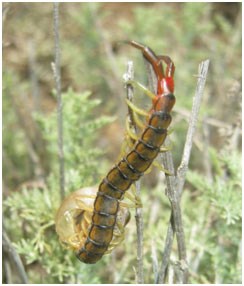
It will attack and consume almost any animal that is not larger than itself. These include insects and small lizards. Its venom is likewise not as toxic as that of other scolopendrid centipedes.
3.Amazonian giant centipede
Scolopendra gigantea, also referred to as the Peruvian huge yellow-leg centipede or Amazonian giant centipede, is among the biggest centipedes of the genus Scolopendra with a length of approximately 30 centimeters. It is a carnivore that feeds upon any other animal it can subdue and eliminate.
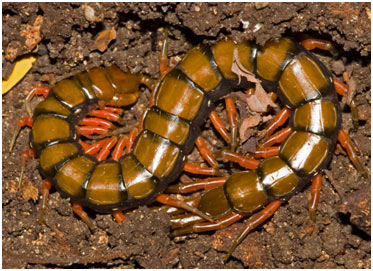
It is capable of overpowering not only other invertebrates such as big insects, spiders, millipedes, scorpions, and even tarantulas, however also small vertebrates including little lizards, frogs, snakes, sparrow-sized birds, mice, and bats. At least one human death has been credited to the venom.
4.Scolopendra Cataracta
This type of centipede can swim and stroll undersea just like it does on land. Scolopendra Cataracta can grow up to 20 centimeters long, and these centipedes are venomous and meat-eating. You can identify this centipede species by their big size together with long legs, and dark, greenish-black color.
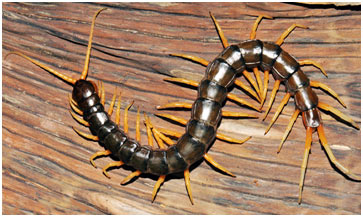
Perhaps you ought to not turn over rocks next to the streams when you are in Southeast Asia specifically Laos and Thailand. These crawlies are pretty quickly, and they might surprise you with a fatal bite.
5.Scolopendra Galapagoensis
Scolopendra Galapagoensis aka Darwin’s Goliath Centipede is one of the largest centipedes on earth. These threaten centipedes given that they have large dangerous mandibles that kill. The centipedes use their mandibles to catch prey, and those mandibles deliver venom together with great discomfort.
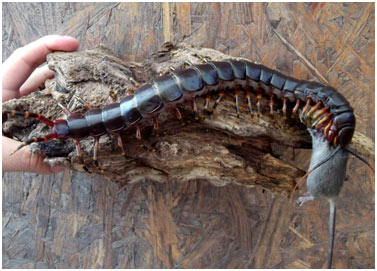
This centipede species can grow up to 30 centimeters, and they are truly huge. These centipedes are different in colors; however, they are all unsafe and venomous to humans.
6.Giant desert centipede
Scolopendra heros, commonly known as the giant desert centipede, huge Sonoran centipede, Texas redheaded centipede, and giant redheaded centipede, is a species of North American centipede found in the Southwestern United States and Northern Mexico. It is mostly a nocturnal predator and hunts invertebrates and little vertebrates, consisting of rodents, reptiles, and amphibians.
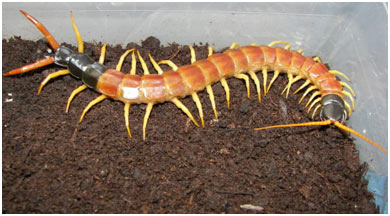
It can reach into the air to grab small flying insects. The centipede utilizes its venom to subdue prey. For people, a bite from S. heros typically causes sharp, searing, local discomfort or pain and swelling, but has actually never ever caused any confirmed deaths. Its bites are known to sometimes cause nausea, headache, and localized skin necrosis.
7.Scolopendra Morsitans
The bad feature of Scolopendra Morsitans is that there are more other related species, and all of them are dangerous. That includes Chinese Red-Headed Centipede, Texas Red-Headed Centipede, and more. Each of them is gifted with painful bites that can cause severe pain to both human beings and animals.
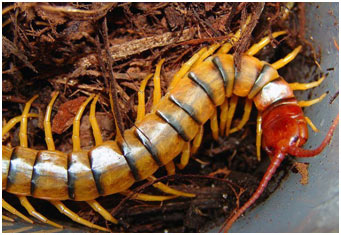
Such species pass numerous colors; however, one common similarity is their redhead that you can quickly see at a very first appearance. The larger they get, the bigger their prey is; and constantly ensure to not get bitten by any of the red-headed centipede species.
8.Scolopendra subspinipes
Scolopendra subspinipes is a species of huge centipede found throughout eastern Asia. One of the most prevalent and typical species in the genus Scolopendra, this species is likewise found on essentially all acreage around and within the Indian Ocean, all of tropical and subtropical Asia from Russia to the islands of Malaysia and Indonesia, Australia, South and Central America, the Caribbean islands, and perhaps parts of the southern United States. It preys mostly on arachnids, including spiders, scorpions, and vinegarroons.
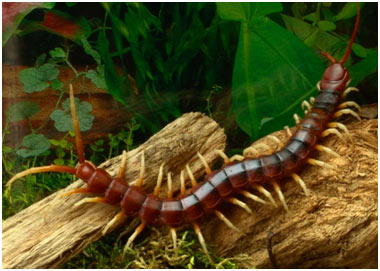
However, if it is large enough to overpower small vertebrates like mice or small reptiles. Scolopendra subspinipes has actually been reported as the obvious cause of human death. The deadly case remained in the Philippines in which the centipede bit a seven-year-old girl on her head. She died 29 hours later.

